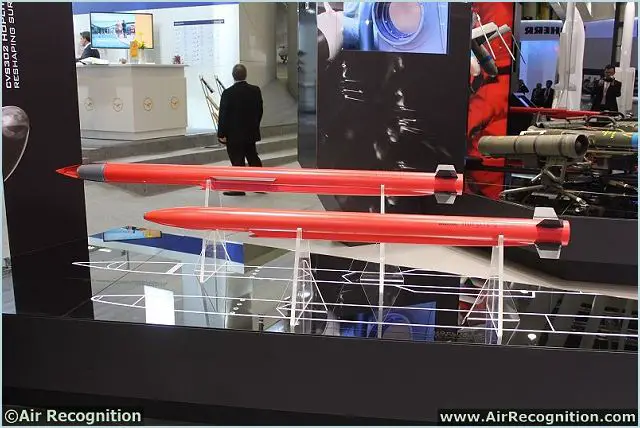At
the Paris Air Show 2013, MBDA is unveiling CVS302 HOPLITE that is designed
to supply an Indirect Precision Attack capability for land and naval artillery
in 2035 and beyond. This represents the fourth and latest of MBDA’s
annual Concept Visions projects, demonstrating once again the company’s
position as a thought leader in envisaging how innovation in missile systems
could dominate the future battlefield.
|
The HOPLITE system consists of a mission control system,
and two missile variants, HOPLITE-S and HOPLITE- L both of which can
fly 70km in under two minutes at low altitude or up to 160km at high
altitude in under four minutes when the way is clear. The system is
able to quickly and safely traverse contested airspaces, and closely
coordinate salvo firings to provide an exceptional fire support capability
to the front line. HOPLITE’s one shot one kill precision simplifies
operations while reducing collateral damage risk and mission cost. HOPLITE
offers a true step change in indirect precision effects at range for
2035 and beyond.
HOPLITE’s mission control guides the operator who maintains executive
control. Planning times are vastly reduced by automating the trajectory
planning and collateral damage risk modelling. Optimised mission solutions
differing in priorities such as time to target or survivability are
provided to the commanding officer. These features enable firings that
would otherwise be impossible, while removing the need to clear an air
corridor and reducing the risk of exposing the launch position. All
processing takes place on a tablet sized computer that is generally
located with the artillery or warship’s command and control but
it can also be with a single launcher. By being platform agnostic the
system will adapt to a wide range of operational needs.
HOPLITE-S is a 3.2m long, 120kg ‘utility’ missile for simple,
supported engagements. It has a versatile spot-scanning ladar seeker
that also provides SAL detection among other functions. As the missile
is either 3rd party designated or attacks on coordinates, its ladar
is used for aim-point refinement. The one-way datalink (receiver) allows
mission updates and retasking. HOPLITE-S can be used in more complex
scenarios with targeting assistance from HOPLITE-L.
HOPLITE-L is a 3.75m, 135kg missile designed for complex, isolated engagements
that require an operator in the loop (OITL) capability. Its multi-mode
seeker allows passive and active 3D imaging, and is robust to adverse
weather, heavily cluttered scenes and countermeasures. The missile can
decelerate to subsonic speeds to provide time for OITL targeting over
its two-way datalink. This, and its ladar channel, can be used to direct
HOPLITE-S onto targets in coordinated salvo attacks resulting in a high-value
increase in capability compared to current systems.
Certain innovative technologies allow such high performances. Both missiles
use an air turbo rocket (ATR) propulsion system, with its integrated
boost motor, to cruise at over Mach 2. The ATR offers the benefits of
solid rocket motors and gas turbines, as well as allowing the large
accelerations and decelerations required by the missiles. A Boosted
Kinetic Energy Penetrator warhead enables HOPLITE-L to defeat all of
its targets from any flight velocity. Lastly, the spot-scanning ladar
is used by both missiles for 3D imaging, target identification, SAL
reception, fuzing and as an altimeter.
For HOPLITE, MBDA's European workforce was challenged to suggest concepts
and technologies for weapon systems that could give future surface forces
the organic capability of delivering precision effects at range. Following
assessment by an international panel within MBDA, the winning concepts
and technologies became the subject of intense workshops, utilising
not only the technical expertise inside the company, but also reaching
out to the end-user community.
|




























